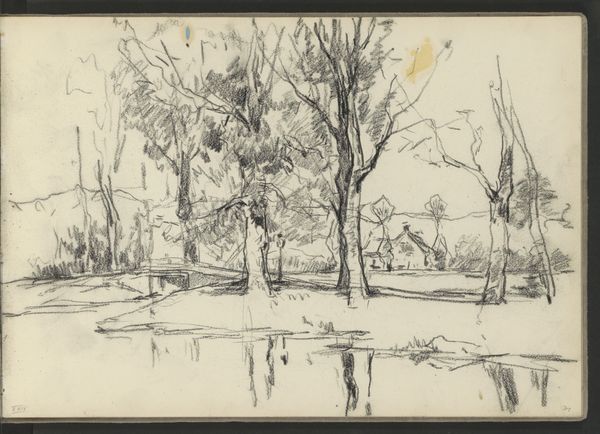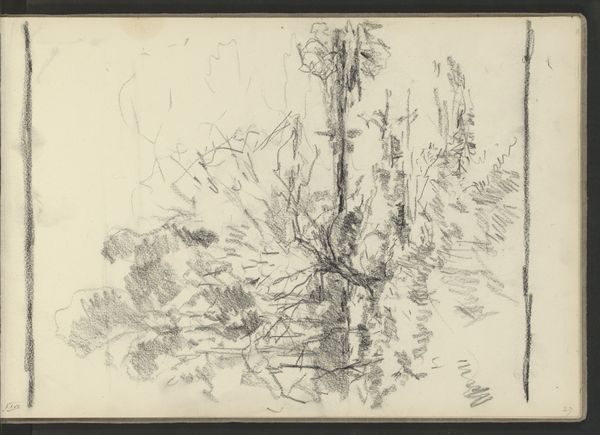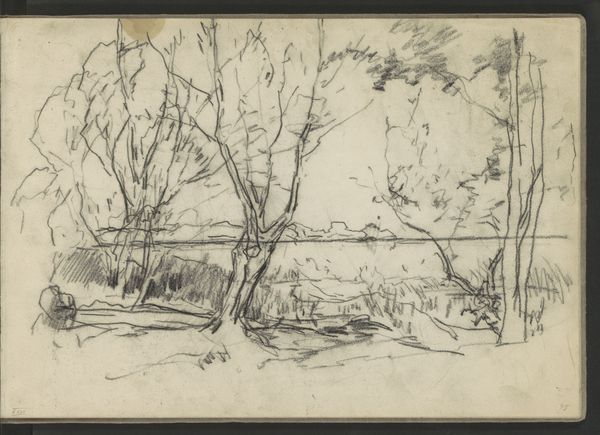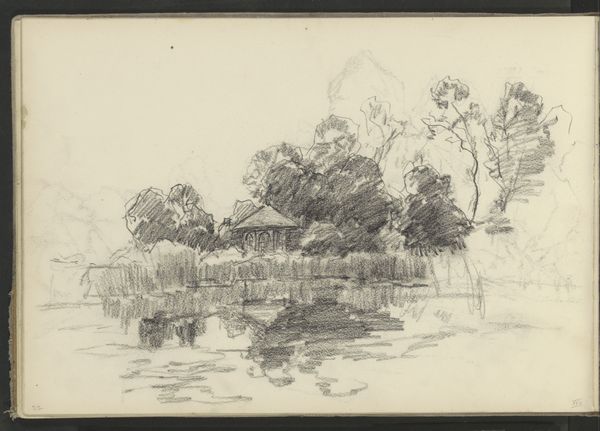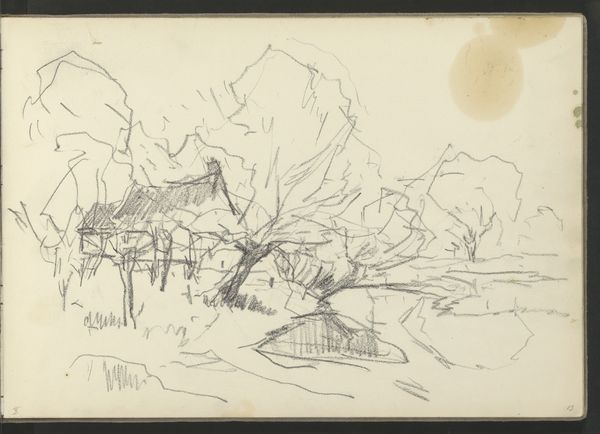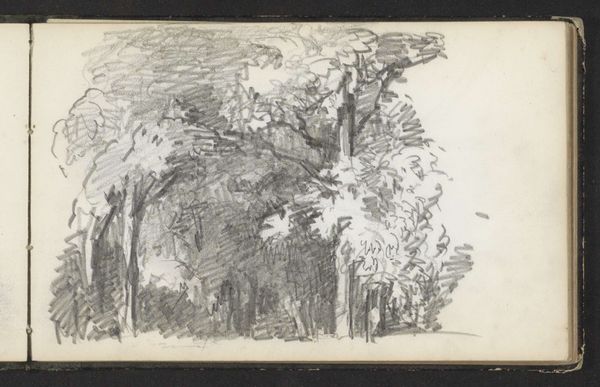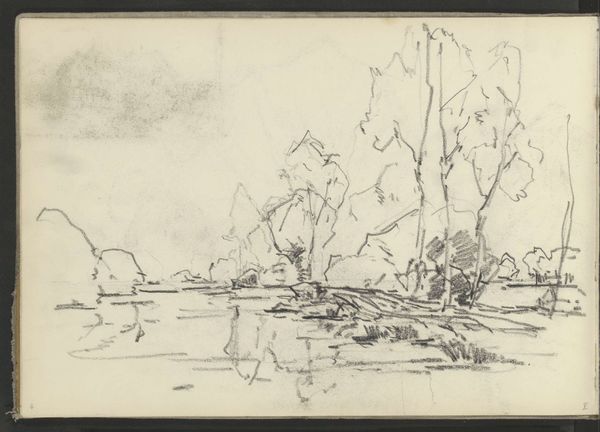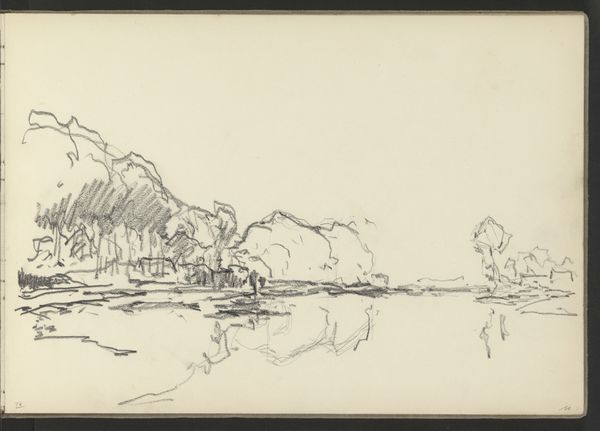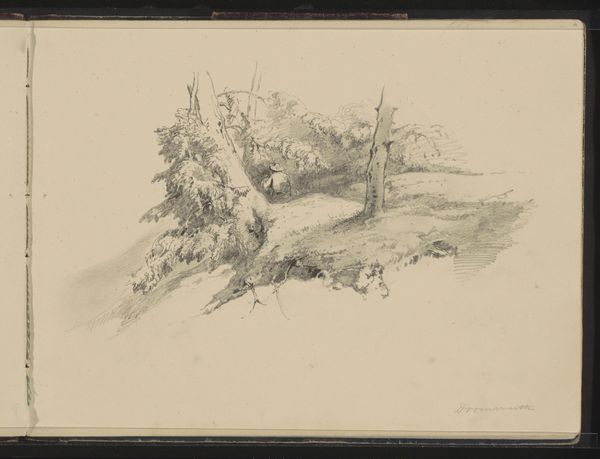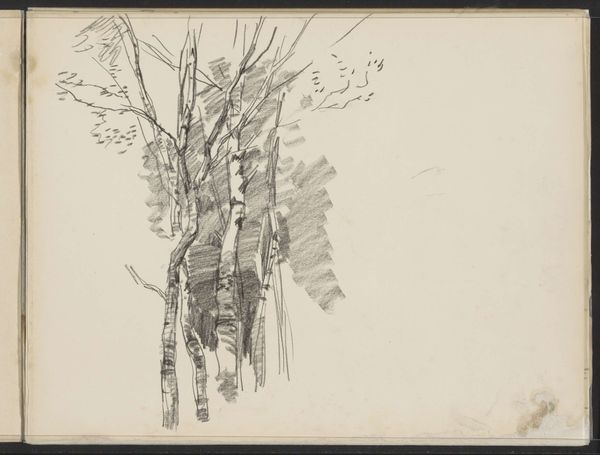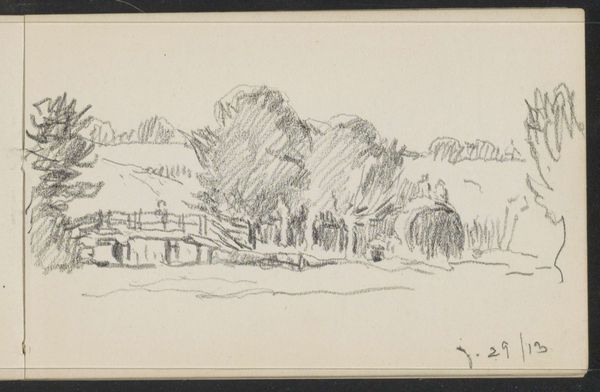
Copyright: Rijks Museum: Open Domain
Editor: This is Egbert Schaap's "Bomen en huizen aan een waterkant," a graphite drawing from around 1891. It’s very atmospheric. The stark lines create an image that seems both fragile and strong, and there’s this amazing interplay between light and shadow. How do you interpret the composition? Curator: Focusing on the formal qualities, notice how the artist uses the stark contrast between light and shadow to create a sense of depth, as you observed. Consider the weight of the lines: Where does Schaap employ the heaviest strokes, and what effect does that create? The structural emphasis, residing within the skeletal outlines of trees, provides the framework, giving this scene a kind of quiet strength, wouldn’t you say? Editor: Definitely, especially near the houses reflected in the water; that use of a dark, dense shading, gives a sense of mass that helps balance the composition. The wispy lines almost seem to suggest impermanence, like the scene could vanish at any moment, but the deeper tones create stability. Curator: Precisely. Note how the balance between detail and suggestion engages our eye, inviting the viewer to actively participate in completing the image. It begs questions about the materiality of impressionism in rendering place, don’t you agree? The graphite itself allows Schaap to build that dynamism. Editor: That's a wonderful way of seeing it; the interaction is almost musical. This piece now has even more meaning for me. Curator: Yes, I concur. By observing these aesthetic elements in their raw form we see the deeper dialogue between the elements present in nature and the human urge to capture it.
Comments
No comments
Be the first to comment and join the conversation on the ultimate creative platform.
